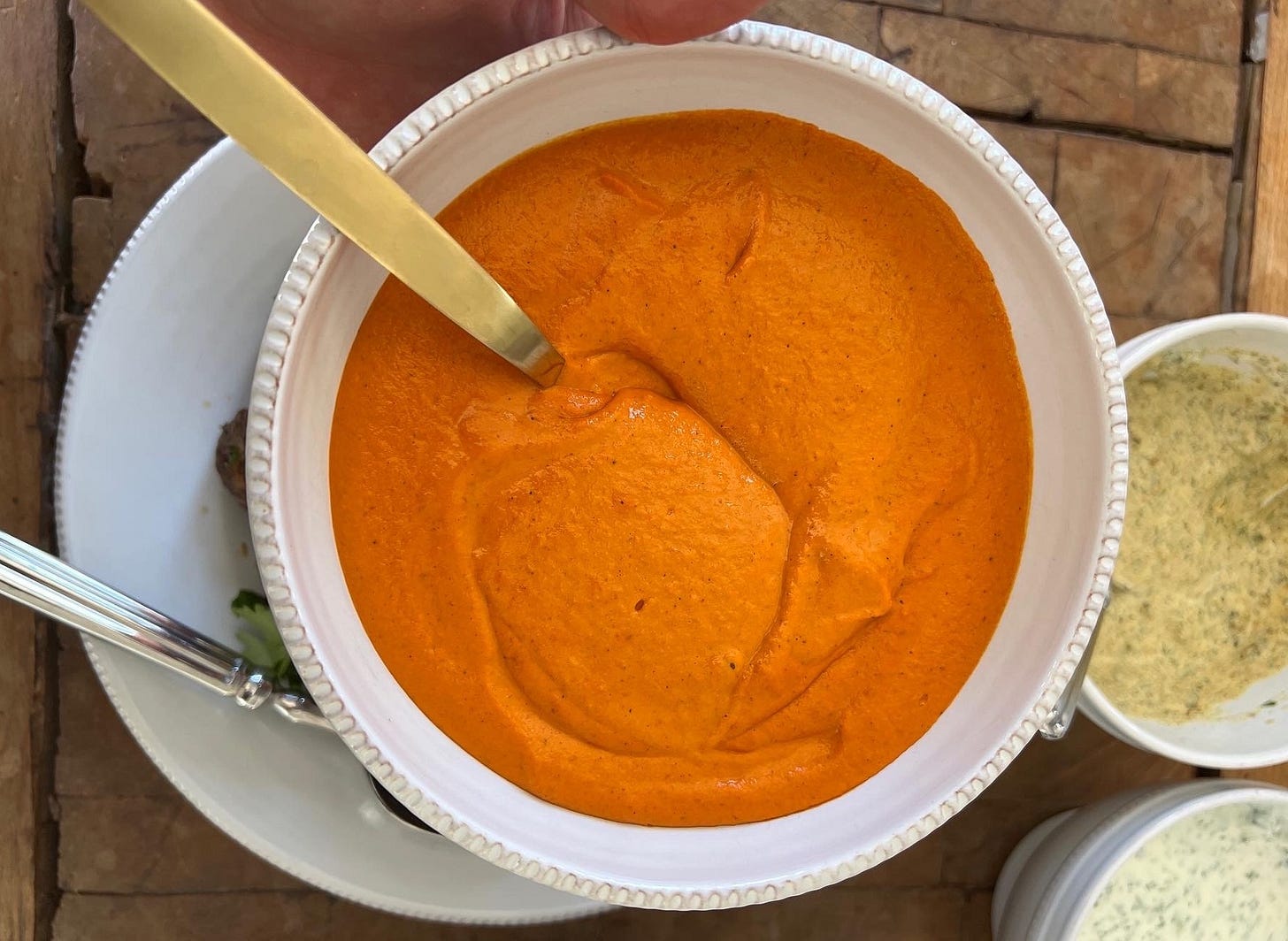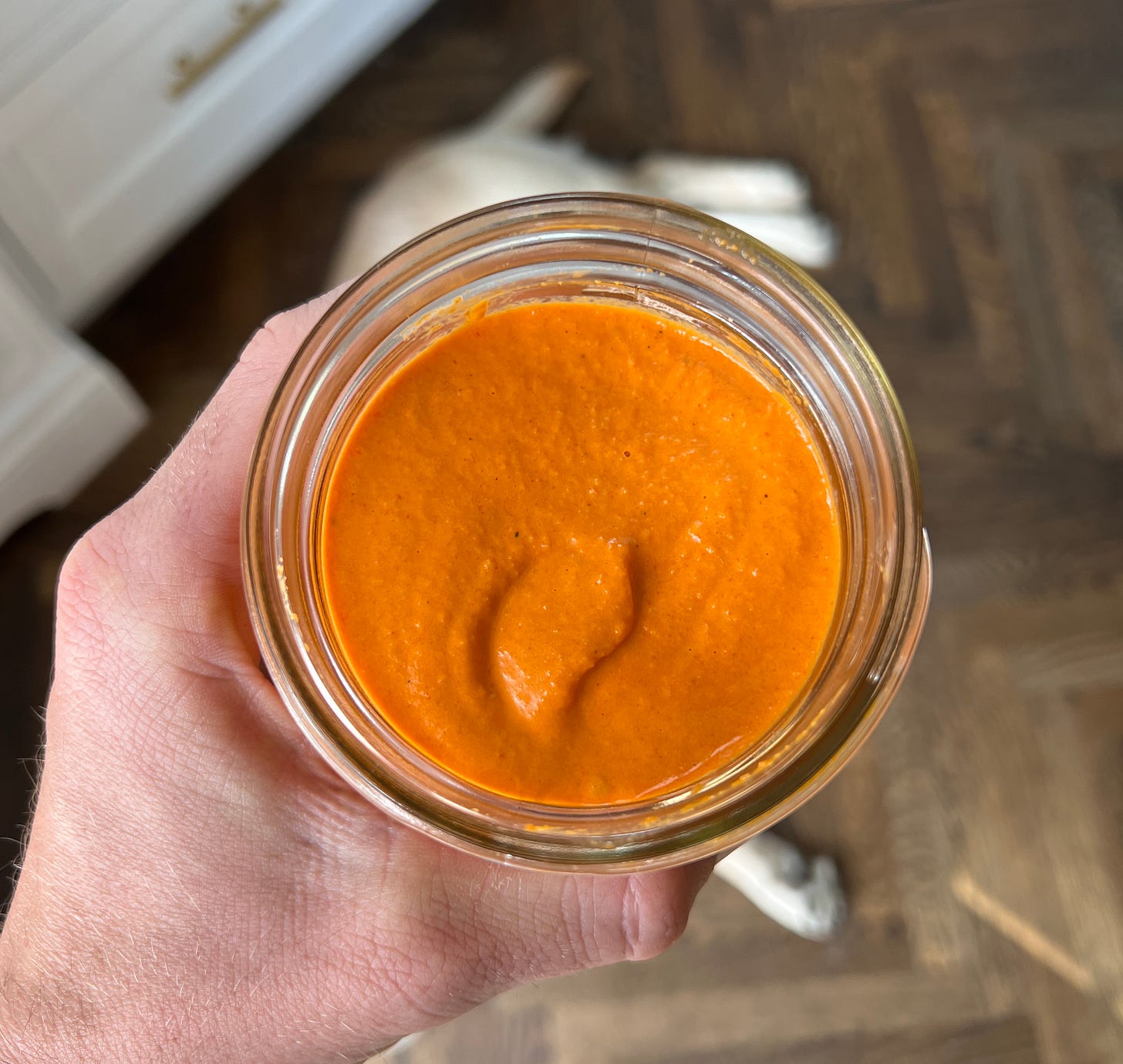Quick note: Yesterday I launched the new and improved version of 80/20 Cooking. You can now join 80/20 Cooking with two tiers: The first one one gets you access to the community, all of the self-paced content, guest lectures, and recordings of the live classes. The second tier gets all of that, plus participation in one of the live, four-week cohorts.
I’ve also simplified the pricing— you can join either tier with a one-time payment (no recurring charges) for lifetime access. I’m doing a limited end of year sale. Use the code ENDOFYEAR for $150 off either tier. Check it out here.
Hey, everyone!
As you can probably tell from reading this newsletter— I’m a big fan of sauces.
One of my favorite tips for easy weeknight cooking is to have a few flavorful sauces on deck. They’re an easy way to add big flavor to whatever else you’re cooking.
Red pepper sauces are one of my favorite categories of sauce. Like the herb sauce and dried chile sauce I’ve posted, you can think of this as a method instead of a specific recipe. There are some core components you can play around with, but there’s a lot of room for experimentation.
When I’m making sauces like this, I rarely measure things. I take note of what core components I have, add them to a blender with eyeball measurements, and then taste and adjust accordingly. I highly suggest you do the same!
Let me know if you have any questions!
Myles
The Core Components
Roasted Red Peppers
Roasted red peppers form the base of the sauce. You can make these yourself, or buy them at the store. Classic Italian-style roasted red peppers work great, but my favorites are Piquillo peppers (which you can find at many grocery stores).
Nuts and Seeds
In sauces like this, nuts and seeds not only add flavor, but they also help thicken the sauce and lend a nice creamy consistency. I’ve made roasted pepper sauces with more types of nuts and seeds than I can count— almonds, pecans, pepitas, macadamia nuts, and cashews are all great. I don’t think you can go wrong here.
Vinegar or Citrus
These sauces should have some acidic element to balance out the oil and other ingredients. I love sherry vinegar or other red wine vinegars, as well as lemon juice. But you can experiment with different types of vinegar or citrus, and even try out other sources of acidity like preserved lemon paste.
Oil
I almost always use olive oil in these sauces, but you can experiment with other oils as well.
Spices
You can customize sauces like this with almost any flavor profile with different spices. When I’m going for a Romesco-style Spanish flavor profile, I’ll usually use smoked and sweet paprika. For a Mexican-style sauce I might use chipotle powder, cumin, allspice, and cinnamon. You could play around with an Indian profile adding garam masala, ginger, and turmeric. You get the idea.
Additional Ingredients
You can experiment with other ingredients in these sauces. Various forms of tomato (whole, canned, tomato paste, sun dried tomatoes) make great additions. Some people like to add breadcrumbs or stale bread to lend additional body. Aromatics like garlic and onion also bring a lot to the table.
Salt
And, of course— always salt the mixture.
A Simple Red Pepper Sauce
This is the sauce I made most recently. It’s so simple and delicious, comes together in less than 5 min, and is super versatile. I love it as a sauce for meatballs, lamb chops, or roasted chicken.

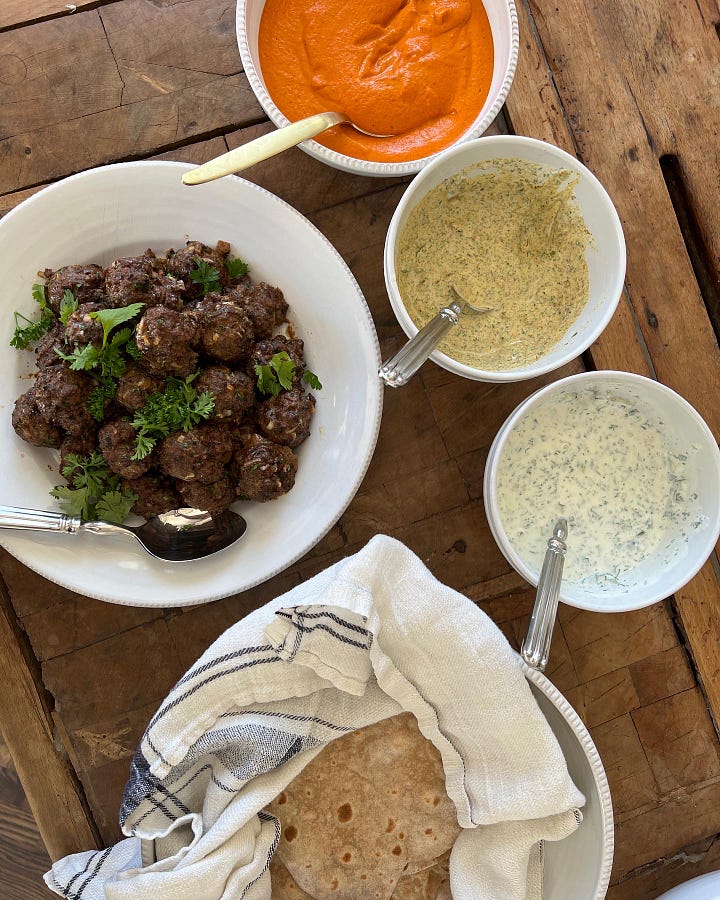
Ingredients
1 jar of piquillo peppers, drained
1/2 cup almonds
1/2-1 tsbp smoked paprika
1/2-1 tbsp sweet paprika
3 cloves of garlic, peeled
~2 tbsp sherry vinegar
olive oil
salt
Process
Add everything to a blender, along with a big pinch of salt a few tbsp of olive oil to get it going. Start to blend the mixture, adding more oil as needed to get a thick and creamy consistency.
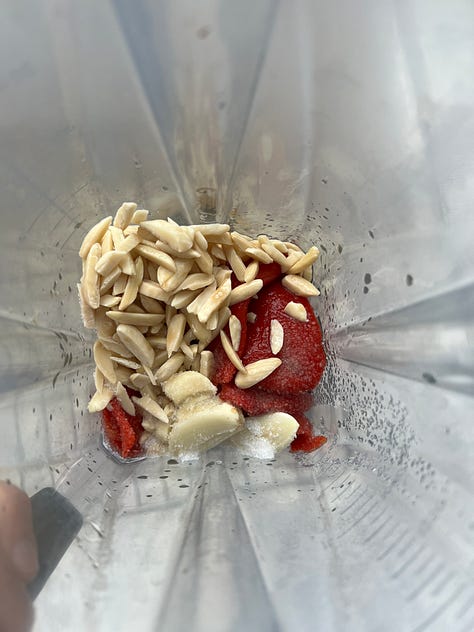
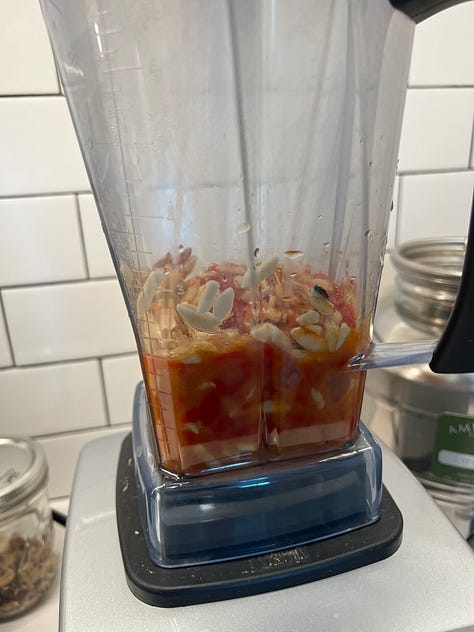

If the mixture is too watery, add in a couple more tbsp of almonds and continue to blend.
Taste the sauce, and adjust as needed with more salt and vinegar to get a flavor profile that you like.
Enjoy.





